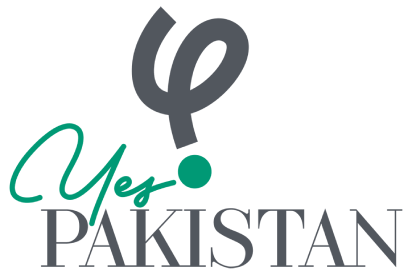The Promise of Pakistani Potential

Ambreen Kazi
As of fall 2024, five students from across Pakistan, including Zohaib Abbas from Cadet College Hasanabdal and Ayesha Kashif from Jhang joined the Harvard undergraduate class of 2028 as freshmen in Boston, Massachusetts. They’re part of an illustrious cohort of students from Pakistan heading to universities like Stanford, Princeton, Yale, Cornell, and more. As students, they are amongst a growing list of outperformers en route some of the most elite colleges in the world.
Viewed as a part of the 125,000-strong cohort that appeared in the Cambridge International Education AS and A Level exam at some 683 schools in Pakistan, these numbers are not outliers but rather an example of Pakistani students’ intelligence, hard work, and dedication—they are an indication of the nation’s youth’s potential.
Of an estimated 251 million population, more than 45% are children and 22.7% are adolescents aged 10 to 19. As a resource poised to lead the country’s future, education is not just their birthright but a need of the hour if we hope for Pakistan to have a voice.
Tough Lessons
While Pakistan’s private education sector booms, creating cadres of students with access and opportunities, the public sector still needs to catch up. Historically, the state’s educational narrative has long been mired in socio-political strife. From the country’s imperial educational background to the current low enrolment rates, high dropout statistics, poor infrastructure, and low quality of education, the sector remains a cripplingly under-focused part of policy, budgeting, and finance.
According to a 2023 UNESCO study, Pakistan’s literacy rate is approximately 60%—with 47% of women and 69% of men literate.
Women’s education, particularly, is in dire need of improvement. In addition to stereotypical beliefs and traditional values, the rural-urban divide also makes access to schooling harder. Academic pundits suggest that one way to overcome obstacles is to enable and aggressively support digital education in the country through AI, personalizing learning experiences, and enhancing digital literacy.
Pakistan’s private schools in urban centers like Karachi, Lahore, and Islamabad are leading this transition towards digitalization. Beaconhouse, with its 146+ schools across some 30 cities in Pakistan, is leading the shift through its Scholastic LTMS School Improvement Plan (SIP). Similarly, The City School Pakistan is incorporating ICTech platforms based on best practices in learning and teaching with technology to empower teachers and students with education that will strengthen them in the future.
Getting Schooled
However, a humbling truth remains: positive endeavors are largely restricted to private-sector educational organizations. While initiated with good intentions, public-sector support from the government is slow in execution and heavily tied in red tape. Even though the Sindh government has pioneered many favorable policies, implementation remains weak. Multiple academic institutions exist as ghost schools with negligible-to-zero teacher attendance. Similarly, student participation is poor at best.
Conversely, the Punjab government seems to be doing slightly better. Under the Punjab Education Foundation (PEF), a quasi-independent body, some of the largest school privatization and school voucher programs in the world have been implemented.
As far back as April 2016, under the Sharif government, from a total of 176,184 (56.2%) public schools, the running of 1,000 government schools in Punjab was taken over by private partners. By 2018, the number had increased to 4,300. As of September 2024, as a part of aggressive ongoing privatization efforts, 13,219 Punjab-based schools are expected to be brought under partnership with private entities, with the total increasing to 15,000 schools by 2025.
Against this backdrop, CARE Foundation Pakistan, an independently run NGO based out of Lahore, manages the running of some 800 government schools, in addition to its own custom-built 88 schools. These 888 schools educate more than 300,000 students, employing over 7000 teachers. Run primarily through donor funding, CARE has an impressive alumni network of over 130,000 graduates filling jobs in public and private sectors all over Pakistan and abroad.
Similarly, the Citizens Foundation (TCF) charity runs perhaps what is the largest network of independently operated schools in the world, educating 204,000 pupils at not-for-profit institutions. Even more praiseworthy is that all 12,000 TCF teachers are females to ensure girls’ safety and physical security on campus. Moreover, the TCF is Pakistan’s largest single employer of women outside the public sector.
Since its inception, TCF’s network of schools has steadily grown. Today, 1,921 school units operate across Pakistan. This includes 953 (50%) of government schools in Sindh, 780 (41%) in Punjab, 87 (5%) in Baluchistan, and 87 (5%) in Khyber Pakhtunkhwa—with more to come.
What’s even more celebratory is that organizations like CARE and TCF are not singular entities in a country famously known for its tenacity, generosity, and spirit. Organizations like Shahid Afridi Foundation, Development In Literacy (DIL), the Edhi Foundation, Zindagi Trust, Literate Pakistan Foundation, Saylani Welfare Trust, Alkhidmat Foundation, Bargad, READ Foundation, Akhuwat Foundation, the Aga Khan Foundation, Behbud, and SOS Children’s Villages, amongst countless others are doing their part in educating Pakistani youngsters.
Local (and International) Superstars
Even beyond the international O and A’ Level results, Pakistan’s Matric and Intermediate results, year-on-year, remain outstanding, and 2024 was no exception. Ayan Kashif from Danish School, Mianwali, and Zunaira Mushtaq from Faisalabad are exceptional examples of toppers in the Lahore and Faisalabad Boards. Similarly, Laiba Bint Muhammad Waseem from the Iqra Huffaz School obtained 99% marks, while 25 others secured 98% marks in the Board of Secondary Education Karachi (BSEK) in their Matriculation exams.
These are the same students from the same country, taking the very same exam that produced global luminaries like Dr Abdus Salam. Given their potential, they only need a little support and well-timed chances to make a significant difference to Pakistan and the world.
The undisputed fact is that Pakistani student excellence in the public and private sectors continues despite political turmoil, frenetic educational reforms, and a lack of opportunities. Imagine what these kids can achieve with the right kind of financing, resources, development programs, and country-wide policy frameworks—frameworks that align with international best practices.
With concerted effort from the government and private sector, we can pave a future where education is an empowering tool for breaking cycles of poverty and instability—a future where our youth’s energy and potential will be harnessed and utilized. A time when each Pakistani matters, and the world pauses to listen to what we have to say.





